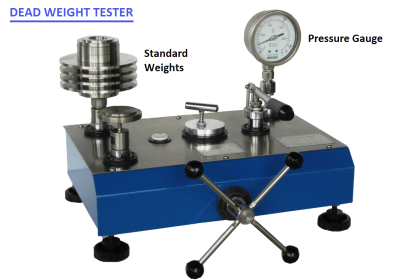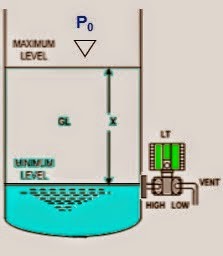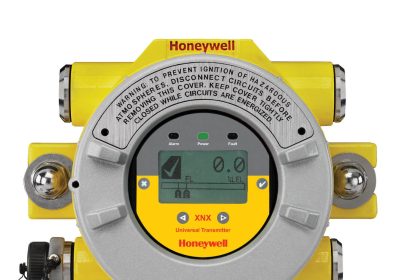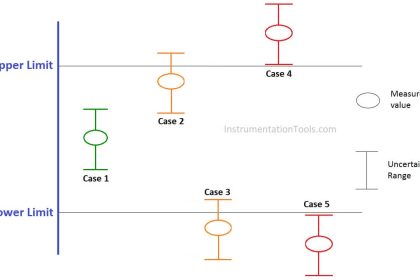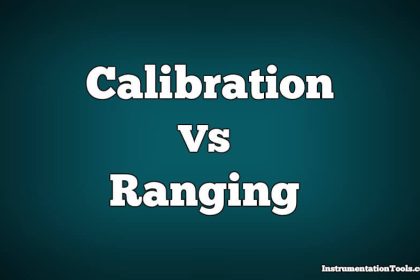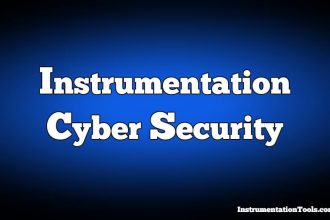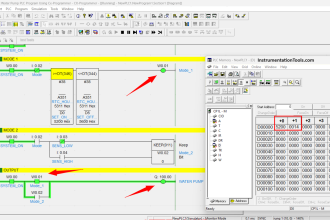Instrument Turndown Ratio
An important performance parameter for transmitter instruments is something often referred to as turndown or rangedown.
“Turndown” is defined as the ratio of maximum allowable span to the minimum allowable span for a particular instrument.
Suppose a pressure transmitter has a maximum calibration range of 0 to 300 pounds per square inch (PSI), and a turndown of 20:1.
This means that a technician may adjust the span anywhere between 300 PSI (e.g. range = 0 to 300 PSI) and 15 PSI (e.g. range = 0 to 15 PSI). This is important to know in order to select the proper transmitter for any given measurement application.
The odds of you finding a transmitter with just the perfect factory-calibrated range for your measurement application may be quite small, meaning you will have to adjust its range to fit your needs. The turndown ratio tells you how far you will be able to practically adjust your instrument’s range.
For example, suppose you were working at a facility where the operations personnel requested a pressure transmitter installed on a process vessel with a measurement range of 50 PSI to 90 PSI.
You go to the warehouse where all the new instruments are stocked, and find a pressure transmitter with a (maximum) range of zero to 1000 PSI, and a turndown ratio of 20:1. Dividing the maximum span of 1000 PSI by 20, we arrive at a minimum span of 50 PSI.
The span requested by operations for this pressure transmitter is 40 PSI (90 PSI − 50 PSI), which means the transmitter you found in the warehouse will not be able to “turn down” that far.
At best, we could range it for 50 PSI to 100 PSI, or perhaps for 40 PSI to 90 PSI, but not the 50 PSI to 90 PSI requested by operations. At this point, you could return to the operations personnel to ask if a 50 PSI span would be acceptable – if not, you will have to order a different pressure transmitter with a smaller span (or with a greater turndown ratio).
Another important consideration with turndown is the accuracy of the instrument at the stated turndown. The further an instrument is “turned down” from its maximum span, generally the worse its accuracy becomes at that reduced span.
For example, the Micro Motion “ELITE” series of Coriolis mass flowmeters are advertised to perform within an accuracy envelope of ±0.05% at turndown ratios up to 20:1, but that measurement uncertainty increases to ±0.25% at a turndown of 100:1, and to ±1.25% at a turndown of 500:1.
It should be noted that the degradation of measurement accuracy at large turndown ratios is not some defect of Micro Motion flowmeters (far from it!), but rather an inescapable consequence of pushing an instrument’s turndown to its limit.
Typical turndown ratio of various meter types
The examples are here for gas flow, but the same meter types can be used on liquids as well, with similar turndown ratios.
Note that meter manufacturers state their products’ turndown ratios—a specific product may have a turndown ratio that varies from the list below.
- A Thermal Mass Flow Meter has a turndown ratio of 1000:1.
- An orifice plate meter has a practical turndown ratio of 3:1.
- A Turbine Meter has a turndown ratio of 10:1.
- Rotary positive displacement meters have a turndown ratio of between 10:1 and 80:1, depending on the manufacturer and the application.
- Diaphragm meters are considered to have a turndown ratio of 80:1.
- Multipath ultrasonic meters often have a stated turndown ratio of 50:1.
Credits : by Tony R. Kuphaldt – Creative Commons Attribution 4.0 License

